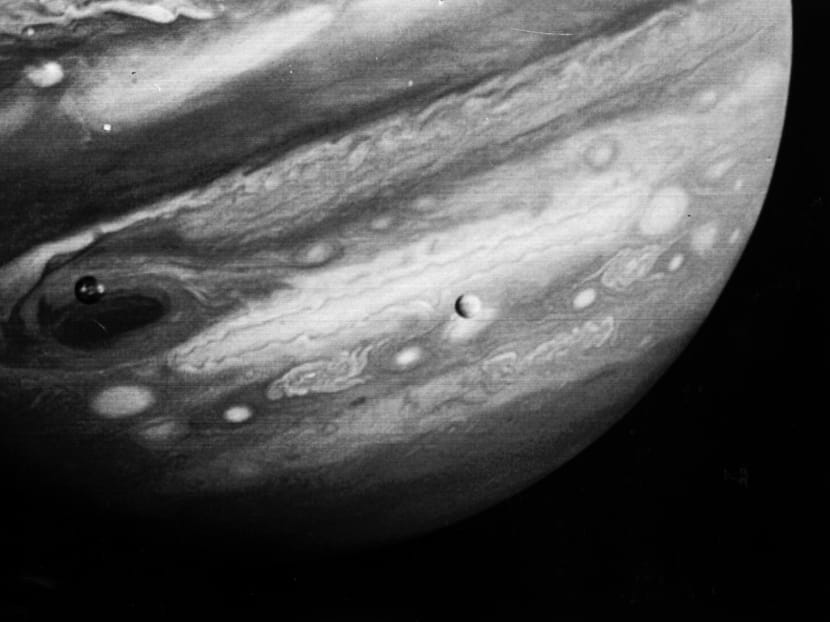NASA plots daring flight to Jupiter’s moon
WASHINGTON — NASA is plotting a daring robotic mission to Jupiter’s watery moon Europa, a place where astronomers speculate there might be some form of life.

This 1979 photo released by NASA's Jet Propulsion Laboratory shows the planet Jupiter and two of its moons, Io (left) and Europa (centre). Photo: AP
WASHINGTON — NASA is plotting a daring robotic mission to Jupiter’s watery moon Europa, a place where astronomers speculate there might be some form of life.
The space agency set aside US$15 million (S$19 million) in its 2015 budget proposal to start planning some kind of mission to Europa. No details have been decided yet, but NASA chief financial officer Elizabeth Robinson said yesterday (March 4) that it would be launched in the mid-2020s.
Ms Robinson said the high radiation environment around Jupiter and distance from Earth would be a challenge. When NASA sent Galileo to Jupiter in 1989, it took the spacecraft six years to get to the fifth planet from the sun.
Rensselaer Polytechnic Institute astronomer Laurie Leshin said it could be “a daring mission to an extremely compelling object in our solar system”.
Past NASA probes have flown by Europa, especially Galileo, but none have concentrated on the moon, one of dozens orbiting Jupiter. Astronomers have long lobbied for a mission to Europa, but proposals would have cost billions of dollars.
Last year, scientists discovered liquid plumes of water shooting up through Europa’s ice. Flying through those watery jets could make Europa cheaper to explore than just circling it or landing on the ice, said NASA Europa scientist Robert Pappalardo.
NASA will look at many competing ideas for a Europa mission, so the agency doesn’t know how big or how much it will cost, Ms Robinson said. She said a major mission goal would be searching for life in the strange liquid water under the ice-covered surface.
Harvard astronomer Avi Loeb said going to Europa would be more exciting than exploring dry Mars: “There might be fish under the ice.” AP





